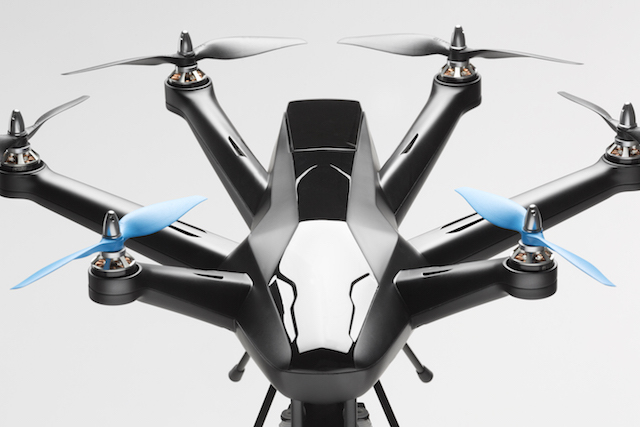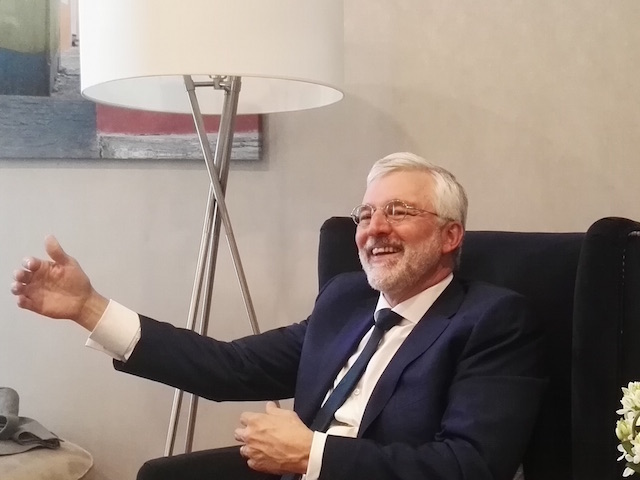We’ve heard much about the benefits of fun about drones – remote control aircraft – but what about the security and safety issues of the device. At the Black Hat Security conference today Jeff Melrose of the Yokogawa industrial controls company described the risks posed when bad people use these devices.
With typical consumer drones having a range of up to five kilometers the idea of an attacker needing to be physically close to their target no longers applies. A drone, as Melrose points out, can can tailgate workers easier than people and even navigate within offices.
Fences are no barrier as Melrose showed with a camera equipped drone being able to fly up to valve within a gas field and then read its meter. The drone doesn’t even need to have to make it back, it could be landed on a roof where it quietly record its surroundings for weeks.
Put more than a camera on a drone, say a wireless packet sniffer or a jamming device and the possibilities for mischief are endless. Melrose illustrated this by starting his presentation with a video of The Killer Drone, a flying chainsaw developed by a pair of Finnish farmers.
Scarier still, was Melrose demonstration of the ‘target tracking’ technology included on the latest consumer drones by chasing one of his research assistants across a lawn. Despite the assistant’s best efforts to escape, the aircraft was able to follow her.
Despite the scary aspects of drone spying, vandalism and harassment the devices aren’t invulnerable. The two Finnish farmers had their drone brought down by a balloon and all the risks – from chainsaws to signal jammers – that drones present they themselves are vulnerable to.
Melrose’s demonstration shows how the physical security world is changing a drones become commonplace. Fences, padlocks and ‘keep out’ signs are not enough to keep today’s generation of technologically savvy trespassers.
Jeff Melrose’s presentation was a thought provoking view of how the threat landscape is changing and that risks evolve with technology.
Paul travelled to Las Vegas as a guest of Nuix




